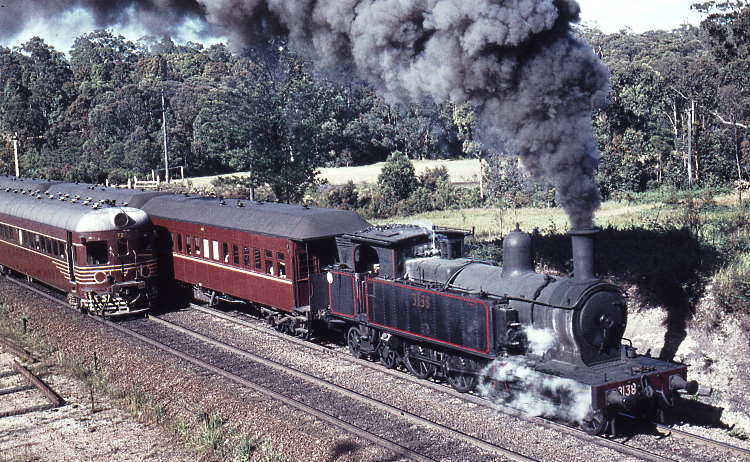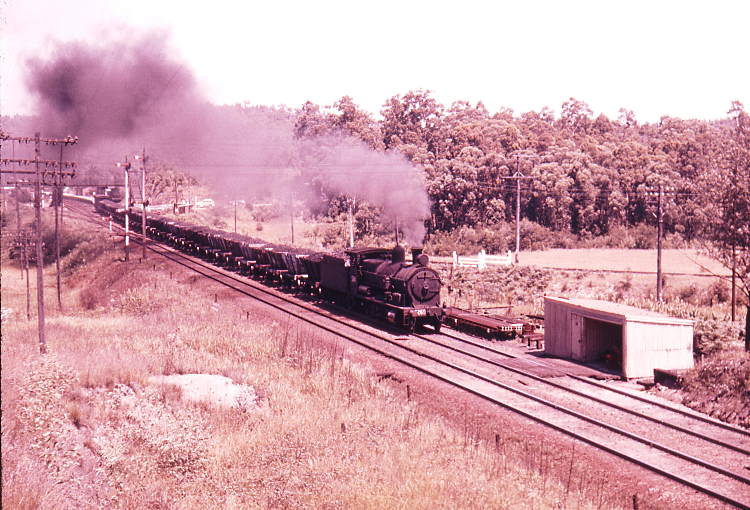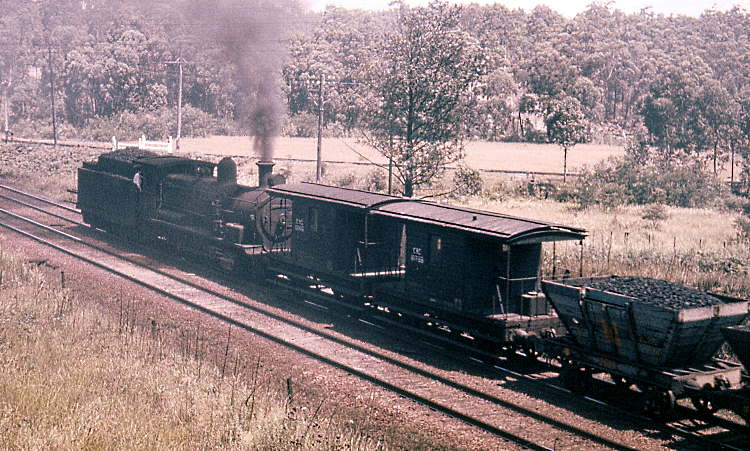Fassifern
Fassifern is a small town located 142km north of Sydney on the main Sydney / Newcastle Railway line.
A station was opened on the western side of Lake Macquarie in 1887 or 1888 to serve the town and by the late 1800’s Olstan Colliery and Northumberland Colliery were in operation.
Both mines had railway connections off the mainline with the line to the Northumberland mine leaving the mainline within sight of Fassifern station.
In 1949 ownership of both mines passed to the NSW Electricity Commission and Olstan Colliery was subsequently close.
Northumberland Colliery’s name was subsequently changed to Newstan Colliery and it is still in operation today.

Apart from the mines Fassifern was also the junction for the line to Toronto with regular suburban trains made up of a 30 Class tank loco and a number of end-platform cars running through the station in both directions
And then there was, and still is, Fassifern Bank … a steep climb at 1 in 40 that faced trains heading for Newcastle. For trains coming out of Newstan Colliery there was no chance to build up any speed before they were into that climb.
And, in steam days, that’s what set Fassifern apart from other stations around Newcastle. There was the usual passing parade of suburban and inter-city trains, goods trains, occasional light engine movements … and then there were the coal trains tackling that 1 in 40 from a standing start.

In steam days the junction of the Newstan Colliery branch and the main line faced down trains … and the junction was on the up side of the station. That was fine if the load was destined for a power station closer to Sydney but what if the coal was headed for a power station north of Fassifern?
In that situation the entire train would back out onto the main line … pause for a few minutes to build up more steam and then, with the safety valve blowing off, it was off with the brakes and let’s build up all the speed we can before we hit the grade.
In four-wheel hopper days
Up to the 1960’s the average train was made up of 4-wheel non-air hoppers … sometimes with two close-coupled 4-wheel brakevans for extra braking power … a standard goods 2-8-0 steam loco at the front … from the super-heated 50 Class or 53 Class and another banking at the rear.
As you can see in these two photos of the front and the rear of the same as it builds up speed for the 1 in 40 that lays ahead.


When the Garratts arrived
When Beyer Peacock’s Garratts began to trickle down to lesser trains in the latter half of the 1960’s loads were still being carried in 4-wheel hoppers leading to odd scenes of large, modern steam locos hauling trains that looked as though they had just escaped from the previous century.
That anachronistic scene didn’t last long and before long more modern bogie hoppers were being used on Newstan trains.

Bigger hoppers led to bigger trains that even a Garratt couldn’t lift over Fassifern bank … and the slightly easier Hawkmount grade further north.
Various combinations were used … standard goods + Garrett … 4-6-0’s of the 35 and 36 Class … and finally double Garratts. Two Garratts lifting tonnage up Fassifern bank was an awesome site and even more awesome if you were standing on the ground as the train stomps up the grade.
Riding on the equivalent of an erupting volcano had it’s advantages. The Garratts were fired with a mechanical stoker while every other engine was fired manually by one man equipped with a shovel.
In diesel days
The loads coming out of Newstan are even bigger and it’s still a slog up the hill … and now it’s even more of a challenge.
The junction has been changed to allow trains heading for Newcastle to head straight out onto the main line so there’s a sharp curve, the station and then the grade.
Unless otherwise indicated photographs on this web page are by Weston Langford.
They are licensed under a Creative Commons Attribution-NoDerivatives 4.0 International License.
Photos marked ** Photo courtesy of Mitchell Library, State Library of New South Wales